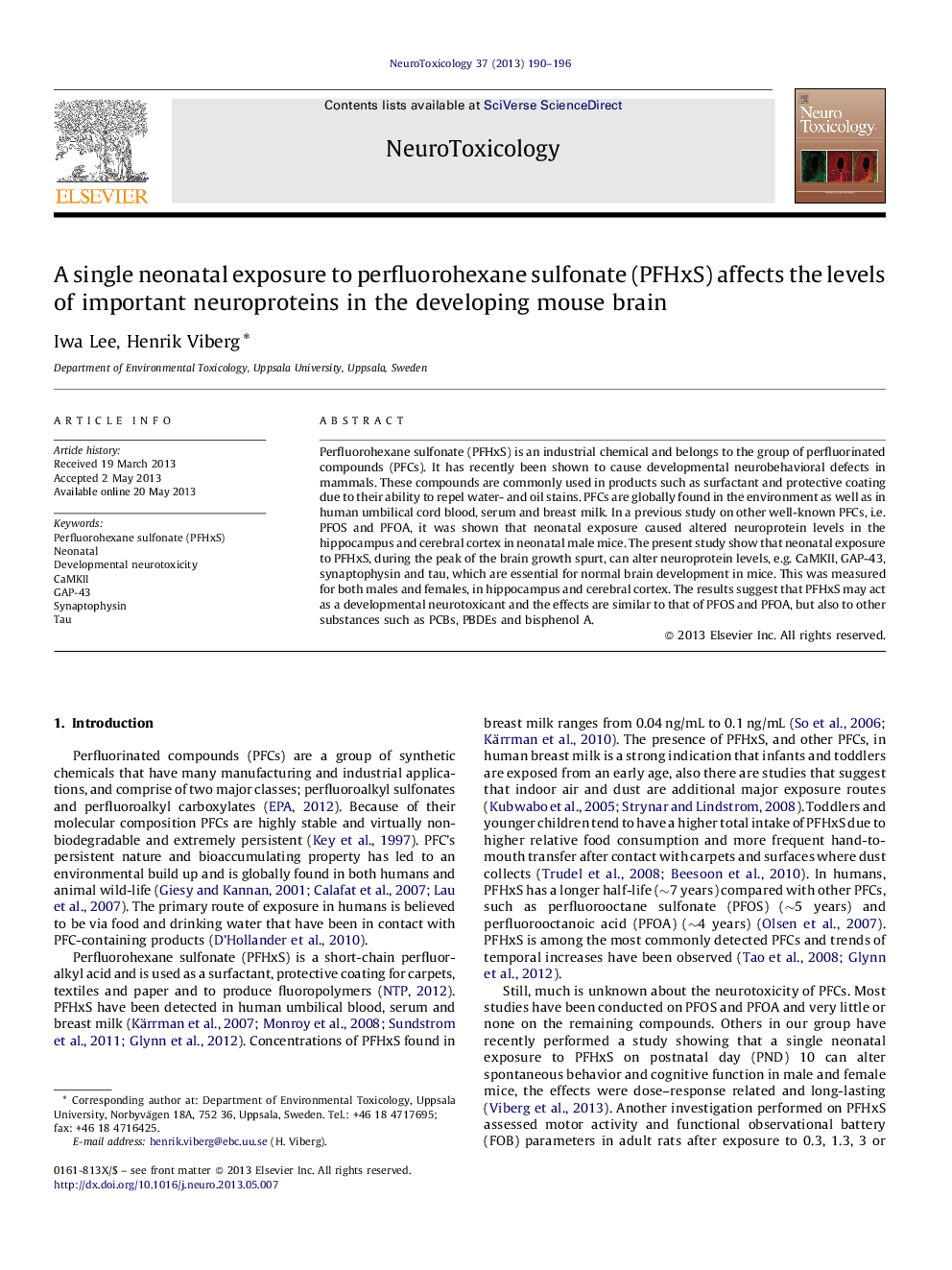| Article ID | Journal | Published Year | Pages | File Type |
|---|---|---|---|---|
| 5855071 | NeuroToxicology | 2013 | 7 Pages |
â¢Exposure to PFHxS during the postnatal peak of rapid brain growth can induce neonatal and adult neurotoxic effects in mice.â¢Neonatal male and female mice, neonatally exposed to PFHxS, showed increased levels of CaMKII, GAP-43 and synaptophysin in hippocampus and decreased levels of GAP-43 in cortex.â¢Adult male mice, neonatally exposed to PFHxS, showed increased levels of tau in cortex.â¢Adult female mice, neonatally exposed to PFHxS, showed a tendency toward increased levels of tau in cortex.
Perfluorohexane sulfonate (PFHxS) is an industrial chemical and belongs to the group of perfluorinated compounds (PFCs). It has recently been shown to cause developmental neurobehavioral defects in mammals. These compounds are commonly used in products such as surfactant and protective coating due to their ability to repel water- and oil stains. PFCs are globally found in the environment as well as in human umbilical cord blood, serum and breast milk. In a previous study on other well-known PFCs, i.e. PFOS and PFOA, it was shown that neonatal exposure caused altered neuroprotein levels in the hippocampus and cerebral cortex in neonatal male mice. The present study show that neonatal exposure to PFHxS, during the peak of the brain growth spurt, can alter neuroprotein levels, e.g. CaMKII, GAP-43, synaptophysin and tau, which are essential for normal brain development in mice. This was measured for both males and females, in hippocampus and cerebral cortex. The results suggest that PFHxS may act as a developmental neurotoxicant and the effects are similar to that of PFOS and PFOA, but also to other substances such as PCBs, PBDEs and bisphenol A.
